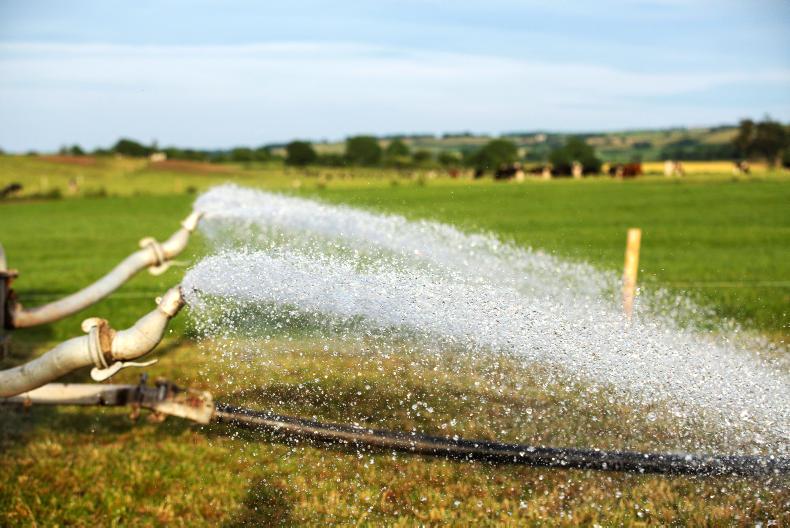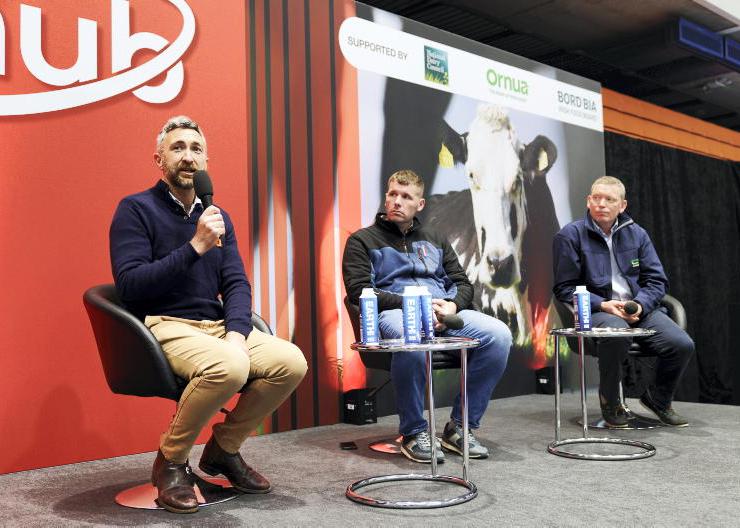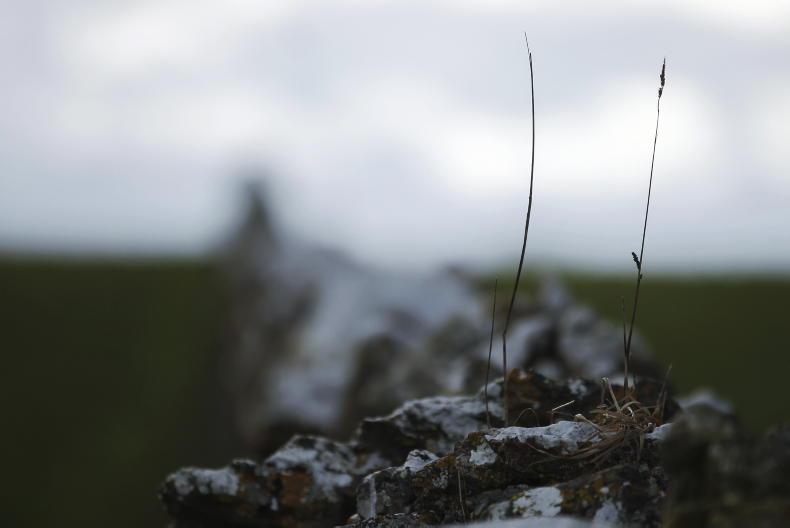1.
What is soil moisture deficit?
Soil moisture deficit (SMD) is the amount of rain needed to bring the soil moisture content back to a value of zero. SMD=O is the amount of water the soil can take and not leak and is termed ‘‘field capacity’’. Negative SMD indicates a water surplus, while positive SMD indicates a water deficit.
The SMD scale goes from -10mm where the ground is considered waterlogged, to 75+mm which represents near drought conditions.
2.
How deficient are Irish soils for moisture currently and how is this impacting on grass growth?
The soil moisture deficit model developed at Teagasc Johnstown Castle is used to model moisture deficits by Met Éireann. As of 2 July, SMD values are running 45mm to 90mm.
3
. Some farmers are irrigating grassland now in an effort to get grass back growing, are their efforts futile? If so why?
Of course, if you can provide adequate water grass will grow. However, to give some perspective to add 10mm takes 100,000 l/ha or 8,900 UK gallons/acre. With Met Éireann reporting deficits of up to 91mm on its most recent SMD map from 2 July, it gives an idea of the volumes of water involved

The challenge with tankers is to be able to provide enough water and have it infiltrate to the roots rather than run off or evaporate. Growing plants will also transpire water and the loss of water to the air though this process combined with direct evaporation is known as evapotranspiration.
4.
Irrigation is common in New Zealand. Why does it work there so well?
With adequate water, plants, including grass, will grow well. Irrigation systems apply water over many hours at a low rate relative to applying water with a tanker. This allows the water to infiltrate into the soil. Our ryegrass is a cool-season grass and higher temperatures and high levels of sunlight can impact its growth, particularly when water is limited. Under irrigation increased transpiration helps the grass manage higher levels of heat and sunlight.
5.
Could irrigation play a role in freshly emerging grass reseeds? Is there a risk if reseeds that have begun to emerge do not get rain they will die off?
Yes, of course, but there are practical considerations:
Note the volume of water needed above just to add each 10mm.Using tankers getting the water to infiltrate can be an issue.Be careful with potential caking of soil after a deluge of water followed by resumed sun and drought. Grass reseeds have limited root mass and little reserves and are therefore vulnerable to drought conditions.
6.
Is there any danger spreading fertiliser in this weather? Will it work or could it burn the grass? Do different types of fertiliser react in different ways in the heat?
It is water, not nitrogen, that is limiting growth of grass at present and has been for some time (refer to the SMD information). For this reason, it is now best to hold off spreading until growth resumes. The flush of N mineralisation from rewetting soils along with residual N from previous applications which has not been taken up will support resumed growth when it rains. CAN fertiliser already spread is relatively safe as it has minimal volatilisation loss potential. Urea-based nitrogen will be likely to have substantial N loss through volatilisation.
Read more
Tips to maintain water supply
1.
What is soil moisture deficit?
Soil moisture deficit (SMD) is the amount of rain needed to bring the soil moisture content back to a value of zero. SMD=O is the amount of water the soil can take and not leak and is termed ‘‘field capacity’’. Negative SMD indicates a water surplus, while positive SMD indicates a water deficit.
The SMD scale goes from -10mm where the ground is considered waterlogged, to 75+mm which represents near drought conditions.
2.
How deficient are Irish soils for moisture currently and how is this impacting on grass growth?
The soil moisture deficit model developed at Teagasc Johnstown Castle is used to model moisture deficits by Met Éireann. As of 2 July, SMD values are running 45mm to 90mm.
3
. Some farmers are irrigating grassland now in an effort to get grass back growing, are their efforts futile? If so why?
Of course, if you can provide adequate water grass will grow. However, to give some perspective to add 10mm takes 100,000 l/ha or 8,900 UK gallons/acre. With Met Éireann reporting deficits of up to 91mm on its most recent SMD map from 2 July, it gives an idea of the volumes of water involved

The challenge with tankers is to be able to provide enough water and have it infiltrate to the roots rather than run off or evaporate. Growing plants will also transpire water and the loss of water to the air though this process combined with direct evaporation is known as evapotranspiration.
4.
Irrigation is common in New Zealand. Why does it work there so well?
With adequate water, plants, including grass, will grow well. Irrigation systems apply water over many hours at a low rate relative to applying water with a tanker. This allows the water to infiltrate into the soil. Our ryegrass is a cool-season grass and higher temperatures and high levels of sunlight can impact its growth, particularly when water is limited. Under irrigation increased transpiration helps the grass manage higher levels of heat and sunlight.
5.
Could irrigation play a role in freshly emerging grass reseeds? Is there a risk if reseeds that have begun to emerge do not get rain they will die off?
Yes, of course, but there are practical considerations:
Note the volume of water needed above just to add each 10mm.Using tankers getting the water to infiltrate can be an issue.Be careful with potential caking of soil after a deluge of water followed by resumed sun and drought. Grass reseeds have limited root mass and little reserves and are therefore vulnerable to drought conditions.
6.
Is there any danger spreading fertiliser in this weather? Will it work or could it burn the grass? Do different types of fertiliser react in different ways in the heat?
It is water, not nitrogen, that is limiting growth of grass at present and has been for some time (refer to the SMD information). For this reason, it is now best to hold off spreading until growth resumes. The flush of N mineralisation from rewetting soils along with residual N from previous applications which has not been taken up will support resumed growth when it rains. CAN fertiliser already spread is relatively safe as it has minimal volatilisation loss potential. Urea-based nitrogen will be likely to have substantial N loss through volatilisation.
Read more
Tips to maintain water supply











SHARING OPTIONS